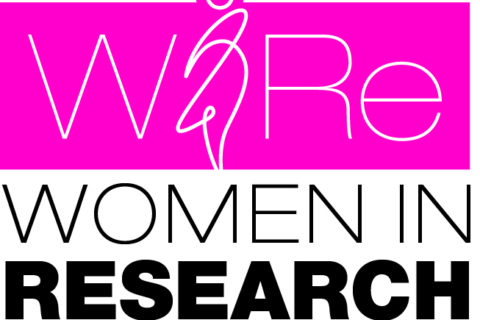Eileen Campbell
I spent the vast majority of my career in the world of brand and research consulting. But a year ago, I found myself in a strange new world filled with superheroes. So my mind naturally turns to the fascinating world of Marvel, where the ever-inventive Stan Lee provides a character who is the perfect metaphor for the she-conomy, the super-heroine, She-Hulk. For those of you less vested in my “Marvel-ous” world, let me introduce Jessica Walters, aka She-Hulk. A cousin of Dr. Bruce Banner, The Incredible Hulk, she too received a tainted blood infusion that turned her into a “large, powerful green-hued version of herself”1. Let’s look at what lessons we marketers can learn from our comic book protagonist.
SHE IS LARGE…
There are 3.4 billion females in the world and women now outnumber men in most of the developed world according to Geohive, a global database of population statistics2. In the USA, nearly three-quarters of all women participate in the labour force. While that number has remained largely stagnant for two decades, women’s work force participation in other parts of the world has continued to grow. In 1990, the US ranked 6th on female workforce participation. That ranking has dropped to 17th – not because fewer American women are working, but because in the rest of the world, women are gaining greater financial autonomy by working outside the home3. Avoiding value judgments about the merits of work inside or outside the home, our focus here is on the importance of women to brand marketers. It is unassailably true that this importance rises when women have incomes of their own and are contributing significantly to the affluence of their households. Which leads me to…
SHE IS POWERFUL…
Women are exerting more and more influence over brand decisions, even over products that are traditionally seen as the domain of men. In fact, marketers can ignore women for a mere 15% of purchasing decisions. Women make or are actively engaged in a full 85% of purchases. And woe to the seller who incorrectly presumes a woman isn’t involved in a particular decision.
Let me share a personal anecdote to illustrate my point. A year ago, I decided to buy a new car. I happen to like fast cars and prefer to drive a manual transmission. And while the purchasing decision was entirely mine, I took my husband along for the shopping ride. The first dealership we went, asked who the driver would be and preceded to show us all automatic transmission vehicles because “he knows women don’t like stick shifts”. Strike one. At the next dealership, the sales person presumed because we were looking at sports cars, my husband must be the driver and promptly adjusted the seat and mirrors to his 6 foot-4 inch frame, not my 5 foot-1 inch physique. Strike two. Next up was the dealer who presumed that my husband was buying the car for me. Strike three. Which leads me to…
SHE HAS GREEN…
She earns lots of green and can afford your products! In fact, women like me are the final decision makers in two-thirds of all new car purchases. Our access to disposable income is on the upswing with no signs of abating. Given the growing rate at which women are entering university, their higher probability of graduating and going on to earn advanced degrees, they also can look forward to out-earning their male cohorts. In fact, across all ages and levels of educational attainment, it is estimated that by 2028, the average American woman will out earn the average American male. While it bums me out to think that wage equality is still so far in the future, even today, women control $20 trillion in consumer spending4 and a growing percentage of business spending globally.
So in the face of mounting evidence that brand success is nigh impossible without the active endorsement of female consumers, what is a marketer to do? Maybe they can learn more from Marvel & She-Hulk. Let’s look a little closer at her personality – she’s a pretty good surrogate for “every-woman”.
She….
Is fun loving & feisty. Around the world, women are feeling increasingly stressed and time pressed. In spite of this, women are looking for small moments of joy. Marketers who can help women liberate their time in a way that allows her to have a bit more fun will be duly rewarded. Humor works – just don’t make it mean spirited.
Is empathetic & imbued with a sense of fairness. Women view the world in a much more relational fashion than men, who often still view the world hierarchically. Women aren’t looking for products or messages that make her “better than”, she’s just looking for “better”. Inciting jealousy or envy is rarely a winning tactic with empathetic female consumers. Women as consumers will often seek out the “win-win” situation where men may be more inclined to only feel they have won if someone else has lost.
Is defined by a dual need for independence and acceptance. Truth is, women want a voice in decisions, but they don’t want to be burdened with sole responsibility for making all of them. A recent Nielsen study5 found that in both developed and emerging markets, women didn’t want to “take over” responsibilities. Rather, they seek more shared responsibilities in everything from how the kids are raised to how the family’s funds are invested. Whether single or married, women want lasting relationships with people they love and respect. In business, they seek out true partnerships. She is willing to have a laugh at the expense of the men in her life, but the trend towards making men look like buffoons in advertising and popular culture isn’t particularly persuasive for most women.
Values close emotional ties with friends and family. There is still no communication channel more powerful with women than word-of-mouth. Women trust their friends and family most. They are active users of social media and are much more likely to be influenced by comments, reviews, likes and referrals from “real people”, particularly those they know personally. In choosing communication channels, context matters. Women are more engaged with channels that provide valued information and serve a useful purpose in her life.
So who is getting it right? Honestly, not that many marketers. I had hoped to provide compelling examples of marketing communications that successfully reflected important values to female consumers. Sadly, they are surprisingly rare and it is much easier to find bad examples than good ones. Kudos to Procter and Gamble who have done a great job with their Olympic ads focused on moms, the Pantene “Not Sorry” and the Cover Girl “Girls Can” campaigns. Unilever has long embraced insights about female consumers in their “Real Beauty” and more recent “Sketches” campaigns. But outside of the health and beauty aid category, examples remain surprisingly rare. Women remain nearly non-existent (or as the passenger) in car ads and mostly the objects of desire in liquor ads.
It is unlikely that we will see much change in how we market brands to women if we don’t see bigger changes in who is driving that marketing. Fewer than 5% of Fortune 500 CEOs and a mere 8% of the world’s CMOs are women6. Perhaps even more telling, the creative minds from which most marketing ideas spring are overwhelmingly male. A shocking 97% of agency creative director positions are held by men7. As She-Hulk can attest, even the Fantastic Four and the Avengers embrace greater gender diversity than the marketing industry! Female superheroes are experiencing a surge of interest at the moment. Isn’t the time right for a surge in female supermarketers?
Eileen Campbell is Chief Marketing Officer at IMAX
1. Wikipedia – She-Hulk – last modified August 3, 2014
2. Geohive – 2010 population statistics UN Statistics Division, Department of Economic and Social Affairs. “World Population Prospects: The 2010 Revision”.
3.. Blau, Francine D and Kahn, Lawrence M. – Female Labor Supply: Why is the US Falling Behind? National Bureau of Economic Research, June, 2013
4.. Fabry, Susan – Women Dominate The Global Marketplace; Here Are 5 Keys to Reaching Them – Fast Company, April 2011
5. Nielsen – Women of Tomorrow: A Study of Women Around the World, June 2011
6. Grant Thornton International Business Report – 2012 – “Women in senior management: still not enough”
7. Fast Company – “Where Are All the Female Creative Directors?”, February, 2013



2 comments
Wow, judging by the rest of this article it must have been written by one of these new american feminists……
So much menbashing throughout this article. The irony of calling oneself emphatic while implying men lack empaty, its not like we dont want to be Accepted.
Not like men do not want to have Fun.
But we are just being unfair bastards who see females as below us because of some hierarchie (that I was just told about). So why think about our feelings (we probably dont even have something like that right?)
No wonder the world is going to shit… Women apperantly buy too much shit…. Stop female consumerism, save the planet. Do you really need 70% more stuff than men?